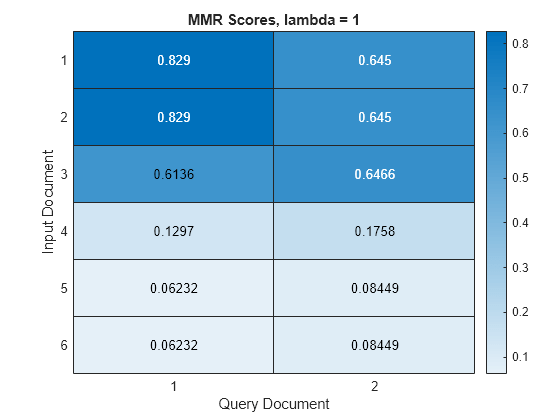mmrScores
Document scoring with Maximal Marginal Relevance (MMR) algorithm
Syntax
Description
Examples
Input Arguments
Output Arguments
References
[1] Carbonell, Jaime G., and Jade Goldstein. "The use of MMR, diversity-based reranking for reordering documents and producing summaries." In SIGIR, vol. 98, pp. 335-336. 1998.
Version History
Introduced in R2020a



